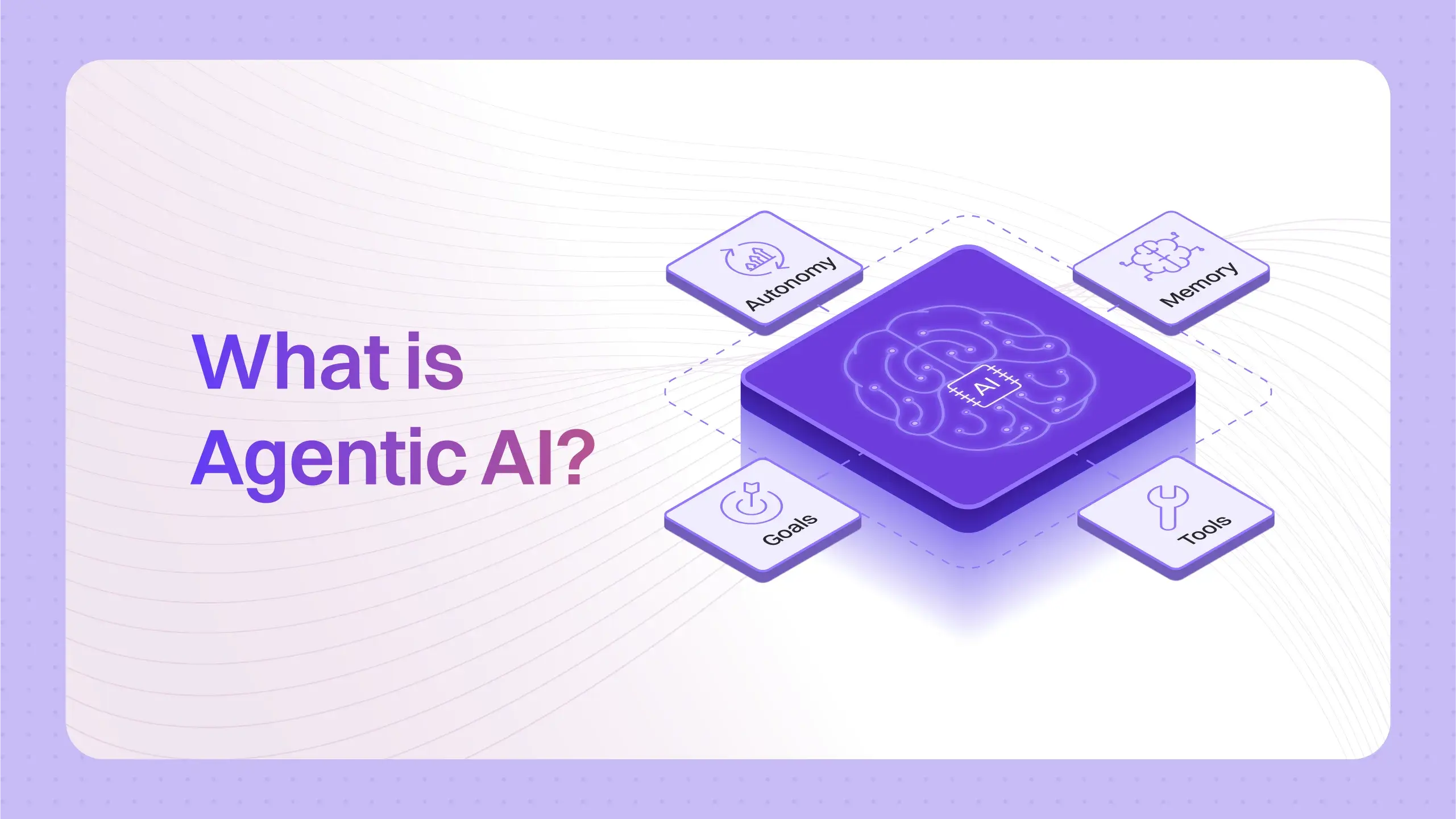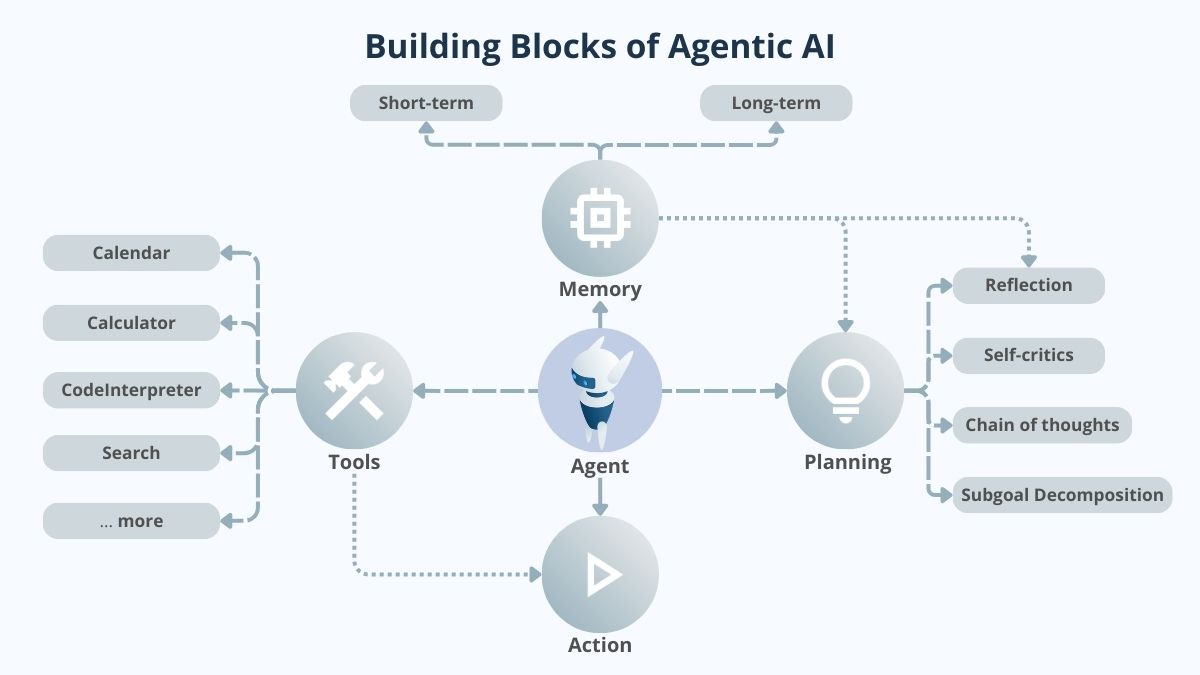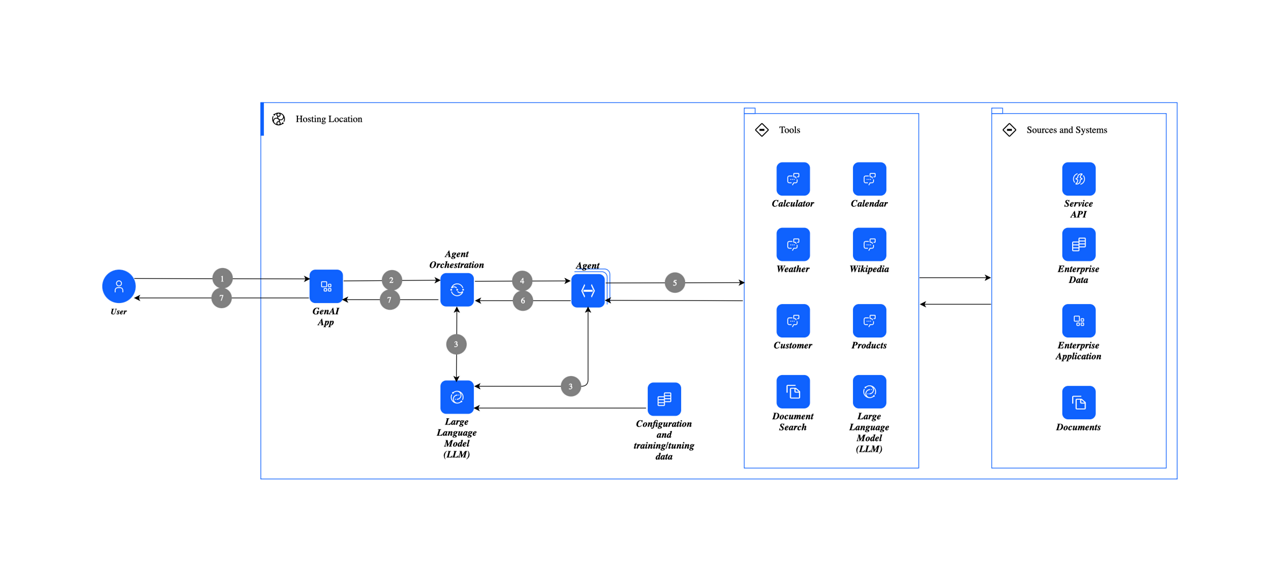Agentic AI: An Overview
This post provides an overview of Agentic AI based on key points outlined in my notes. The content is structured to explain the concepts clearly and concisely, incorporating relevant diagrams for illustration.
What is Agentic AI?
Agentic AI refers to applications that utilize large language models (LLMs) to perform tasks. It does not possess independent thinking capabilities but excels in task execution. Agentic AI systems rely on LLMs to determine and generate tasks. The process involves submitting a task to the LLM, which responds with subtasks for the agent to complete. The agent executes these, and the LLM generates a response based on the results. This approach enables AI to handle practical applications beyond mere text generation.Why Combine Agents and LLMs
LLMs are fundamentally functions that process text input to produce text output; they cannot perform actions independently. Agents serve as intermediaries that interpret LLM outputs and execute the required tasks, such as API calls or data processing. This integration allows LLMs to extend their utility into actionable scenarios.Distinction Between Agentic AI and AI Agents
An AI agent is a standalone software component that interacts with an LLM to manage tasks. In contrast, Agentic AI describes a system comprising multiple agents collaborating to achieve complex objectives. Examples include a master agent coordinating with specialized agents for web searches, personal assistance, document handling, or coding support.
Operational Mechanism of AI Agents
AI agents function through a structured process:- Receive the input task or message.
- Compile a list of available tools.
- Create a payload including the message, conversation history, and tool list, then submit it to the LLM.
- The LLM evaluates the payload and determines if a tool is needed, specifying parameters if applicable (e.g., for a weather query, it may call a weather tool with location details).
- Execute the tool, which could be local or external, and return the result to the LLM.
- The LLM processes the result and either generates a final response or requests additional tool calls, continuing in a loop until resolution.

Essential Features of AI Agents
Effective AI agents incorporate several core features, each with practical applications:- Reasoning and Planning: Agents use LLMs to decompose tasks, prioritize steps, and develop strategies. For example, in project management, an agent might break down a software development task into planning, coding, testing, and deployment phases, adjusting based on feedback.
- Tool Use and Calling: Enables interaction with external resources to gather or process information. A real-world use case is in e-commerce, where an agent calls a inventory API to check stock levels before confirming an order.
- Memory:
- Short-term Memory: Maintains context for the current session, functioning as a temporary storage. This is useful in customer support chats, where the agent recalls previous messages to provide consistent responses without repetition.
- Long-term Memory: Retains historical data for improved future performance. In personalized fitness apps, it could store user workout history to suggest progressively challenging routines.
- Action Execution: Performs the operations specified by tool calls. For instance, in automated reporting, an agent might execute data queries and generate visualizations from databases.
- Learning and Adaptation: Advanced agents refine approaches based on prior outcomes. In stock trading bots, an agent could adapt strategies by analyzing past market predictions and adjusting algorithms for better accuracy.
- Communication: Facilitates natural language interactions with users or other agents. This feature shines in collaborative tools, like virtual team assistants that coordinate between human users and multiple agents for event planning.
Creating and Using Personalized Agents
Users can build personalized agents to tailor AI capabilities to specific needs, leveraging open-source frameworks like LangChain or AutoGen. Here's how to get started:- Define Objectives: Identify the primary tasks, such as email management or content research, to guide agent design.
- Select Tools and LLMs: Integrate relevant APIs (e.g., for calendar access) and choose an LLM like GPT-4 or Grok for reasoning.
- Implement Memory and Loops: Add short- and long-term memory for context retention, and set up iterative loops for complex tasks.
- Test and Iterate: Deploy in a controlled environment, monitor performance, and refine based on real usage.
- Deployment Options: Host on cloud platforms like AWS or run locally for privacy; users can interact via apps or chat interfaces.
Conclusion
Agentic AI represents a significant advancement in applying LLMs to real-world tasks through agent-based systems. It focuses on execution and collaboration to achieve efficient results. For those interested in AI development, exploring agent implementation can provide valuable insights.Tags
#Agentic AI#LLMs#AI Agents#Artificial Intelligence#Automation#LangChain#AutoGen